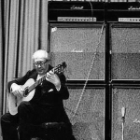Welcome to one of the most active flamenco sites on the Internet. Guests can read most posts but if you want to participate click here to register.
This site is dedicated to the memory of Paco de Lucía, Ron Mitchell, Guy Williams, Linda Elvira, Philip John Lee, Craig Eros, Ben Woods, David Serva and Tom Blackshear who went ahead of us.
We receive 12,200 visitors a month from 200 countries and 1.7 million page impressions a year. To advertise on this site please contact us.
|

|
|
fan bracing
|
You are logged in as Guest
|
|
Users viewing this topic: none
|
|
Login  | |
|

   
Ned Milburn
Posts: 4
Joined: Apr. 18 2013

|
 RE: fan bracing (in reply to El Burdo) RE: fan bracing (in reply to El Burdo)
|
|
|
What type of pine do you intend to use? In general, pine is softer than spruce, although there are some stiff varieties. The fan braces need a certain amount of stiffness and ability to withstand decades of constant pressure. This is why spruce is most widely preferred for fan braces, and most other soundboard braces, too. Cedar, for example, is in general much softer than spruce, and misses spruce's stiffness and transmits sound more slowly.
You can easily get a chunk of decent spruce as Anders states from almost any spruce. If you are intending to continue building a long time, consistency is important, however, and it may be preferable to limit yourself to a few sources and varieties of spruce for bracing to ensure consistency.
|
|
|
|
REPORT THIS POST AS INAPPROPRIATE |
Date May 3 2013 20:02:08
 |
|

   
Ned Milburn
Posts: 4
Joined: Apr. 18 2013

|
 RE: fan bracing (in reply to El Burdo) RE: fan bracing (in reply to El Burdo)
|
|
|
In reply to J.Shelton and Anders:
Re: Cedar stiffness - Experiencing the woods in their raw form (ie: before building) will tell you all you need to know. Cut similar sizes and grain orientation of cedar and several different spruces, then flex them. There should be enough difference to get an accurate assessment of their relative stiffnesses. I have worked with or handled red spruce, sitka, Englemann, European (which is a broad term) and Lutz spruce, as well as Canadian western red cedar and Eastern Canadian Hemlock. It is pretty clear in which order the stiffnesses occur. Also interesting is to flex both with the grain and across the grain, since different species have different balances. (Ie: the Englemann I have worked with tends to be stiff with the grain but less stiff than other spruces perpendicular to the grain.) Several builders have used weights and rulers to measure the stiffness (deflection) of wood as they build guitars.
Re: Cedar softness - Similar to the above, working with the woods will tell many answers. I would be surprised if most people who have worked with red cedar and a variety of spruces would experience anything other than cedar being softer than spruces. Englemann spruce is the softest spruce I have experienced so far, but it still has a lot more resistance to impact than cedar. Try your fingernail on some off-cuts.
Re: Speed of sound - Although I have seen speeds of sound posted on the internet, this in itself is not enough to base a conclusion upon. However, the consistency of the few figures I have seen showing cedar has a slower speed of sound than most spruces, coupled with my own knowledge and experience of music and the basics of physical sound propagation gives me enough support to believe that cedar is indeed a slower conductor of sound than (most) spruces.
Specifically, in general, sound travels quicker through dense objects than less dense objects. Also, in general, sponge-like and softer substances conduct sound more slowly than solid harder objects. Similar to a hanging-ball-bearing "perpetual motion" executive desk toy, the molecules bump directly into adjacent molecules. If the molecules are tightly packed, there is less loss of energy before they bump into the next molecule. Take the same desk toy analogy and rather than the hanging ball bearings being right next to one another, move them a centimetre apart, and it will take more time for the final ball bearing to be moved than if they were tightly packed. This is why water, for example, conducts sound much more efficiently than air, and sound waves through water can travel further than through air. (Even on foggy days, sound travels further through air than on dry days, because there are more molecules in suspension to be affected by the sound wave.)
Also, I fall back here to my experience of playing jazz guitar (I studied jazz guitar during my university music degree and after playing regularly in Montreal). Many modern jazz guitarists use a small amount of delay on their sound. This delay (could be anywhere from 10 to 100 milliseconds or more) smooths out the attack of the note by blending another attack shortly after the initial attack, but at a lesser volume. Hence, instead of having one loud attack that begins to decay immediately, we effectively lengthen the initial attack of the note. The sound created is often described as "warm" or "mellow". Cedar, interestingly enough, when compared to spruce, is often described as "warmer" or "mellower", and "less bright" and lacking a bit of punch, power, or projection. These are general comparative descriptors, but are so ubiquitous as to be indicative of a true existing characteristic of the woods themselves, rather than any subjective psychoacoustic perceptions. (Understand that I know quite well it is possible with modifying thicknesses and bracing patterns to have a cedar topped guitar that does not fit the general description of a "cedar" sound, but these are rare, and tend to also exhibit some characteristics of the "cedar" tone.)
After putting a lot of thought into cedar versus spruce and over 15 years after having first been introduced to the differences in sound, a plausible reasoning came to me in a flash of insight. Similar to the jazz guitar, with a slower (slightly, ever so slightly) propagation of sound through a cedar topped instrument, the attack that is sharp and clearly delineated in a spruce guitar is more "mellow" in a cedar guitar due to the slightly slower sound propagation that spreads its attack over a slightly longer time. I like to keep in mind, also, that the guitar is a unique type of percussion instrument (physical strike creates sound which immediately begins to decay). The guitar's sound generally comes from the "release" of a string, even though it appears as though the string is being "struck". This is why I state a "unique" percussion instrument. So, due to its percussive nature with strong attack and immediate decay, the attack of the note and its immediacy of translation to airborne sound takes much greater precedence than an instrument with sustained note ability (ie: a violin). Hence, the small difference of extra time taken for sound to propagate through a cedar topped instrument can very plausibly explain the difference in sound of the two wood types. There is more to it (the difference between cedar and spruces' sounds) than this, however, since we get into measurements of stiffness and elasticity (stiffness being how hard it is to deflect a solid object from its natural form, and elasticity including the speed and strength at which the deflected object is able to return to its rest position).
As an aside, it is very easy to derive direct empirical evidence of several of wood's properties by doing one's own experiments. Shortly after I purchased my first bandsaw, I practised resawing with some spruce 2x4's I had left over from house renovations. From the exact same 4 inch length of spruce, I cut several 3 mm pieces, of which most were not 100% quarter sawn, but one piece was. At this point in my development and knowledge gathering, I wondered why top builders preferred well-quartered wood. The answer was apparent immediately due to the superb stiffness of the 100% quartered cut, versus the soft "flompy" nature of the non-quartered wood. The softness increased as the cut went further from quarter. I still keep these wood pieces to show to my clients as an introduction to showing them about the properties of wood and the reasons why only top quality wood can produce the highest quality guitars.
Presently, I am building 2 "twin" classical guitars - exact same cut of wood for sides, back, neck, linings, and braces, but the tops are Lutz and Englemann spruces. I am about 1/2 way through the French polishing, but even once the wood-work was finished I could tell that both instruments, while producing nearly exact same pitches in similar areas (tap tones), expressed a different quality in their sustain and quality of sound, with the Englemann being the one that misses a little bit of sustain, power and clarity. (This is a subtle difference that requires a sensitive ear to detect, but I expect that many who participate in this forum would be able to hear the difference.) Remember what I stated above that Englemann tends to be less stiff across the grain (90 degrees to the grain). It is logical that this lower stiffness is a factor in the slightly different tones between these two spruces.
FWIW - Here is a link with some interesting figures. It is the quickest one I was able to find, and while I do not by any means take it as gospel, the comparative figures are interesting and of the softwoods I have worked with that are included, the figures are comparatively as I would expect from my experience handling these woods.
http://uk.answers.yahoo.com/question/index?qid=20081102053004AAGPJj9
I have a link to a local university physics researcher who might be interesting for me to contact in efforts to conduct some tests on woods that I have at hand to get some better measurable readings on certain woods' speeds of sound. If I ever do this, I'll try to remember to post some findings.
Cheers!
|
|
|
|
REPORT THIS POST AS INAPPROPRIATE |
Date May 6 2013 16:56:03
 |
|

   
RobF
Posts: 1611
Joined: Aug. 24 2017

|
 RE: fan bracing (in reply to quartpot) RE: fan bracing (in reply to quartpot)
|
|
|
quote:
ORIGINAL: quartpot
About to start number 7. I have put closing bars on some so far. I have no idea what they actually do. Can some one elucidate? I can't think why I should them if I don't why.
I think not knowing why is possibly the worst reason to decide not to use something.
Try to visualize the structural benefit of the brace beyond being concerned with its impact on tone and response. Any brace that crosses the grain will add stiffness and will help to avoid deformations to the top (ripples and telegraphs). It also will be more resistant to cracking than braces that follow the grain. Why even use a brace that follows the grain? Doesn’t make sense, but it’s done, famously in some Condes. Seems stupid though. But, in general, the bracing strategy should work in conjunction with the physical characteristics of whatever piece of wood is chosen for the top. Like, if you make a successful guitar and want the next one to be similar, then its bracing can be adjusted in an attempt to recreate the characteristics of the braced top of the guitar that worked out so well. Using an identical pattern may not yield the same results. Matter of fact, try to move away from thinking in terms of patterns and try to think more in terms of structure. It’s kind of liberating and is maybe one of the biggest lessons Santos gave us.
You don’t *need* closing bars, the seven fan “Reyes” style pattern, which predates Reyes by a good measure, works fine without them. On the other hand, I have a Barnabe, made for him by a different Madrid house, which employs one of his minimalist bracing concepts and is very sparsely braced, just a few sticks apparently tossed in the general direction of the bridge. The top was left thick enough to not deform, the guitar is very loud and responsive and it’s beautifully crafted and solid looking. It’s also one of the worst sounding guitars I’ve ever played, a total POS, in that respect. So think structure first, but don’t forget about tone.
*edit* I just realized this is a resurrected thread. I didn’t read the entire discussion so it’s possible your answers might already be buried in there. I’m not going to go back and read it all, so I’ll never know, I try to avoid participating in necroposts. At any rate, best wishes for your number 7, it’s a lucky number, I’m certain it’s going to turn out great.
|
|
|
|
REPORT THIS POST AS INAPPROPRIATE |
Date Jan. 20 2024 13:04:47
 |
|
 New Messages New Messages |
 No New Messages No New Messages |
 Hot Topic w/ New Messages Hot Topic w/ New Messages |
 Hot Topic w/o New Messages Hot Topic w/o New Messages |
 Locked w/ New Messages Locked w/ New Messages |
 Locked w/o New Messages Locked w/o New Messages |
|
 Post New Thread
Post New Thread
 Reply to Message
Reply to Message
 Post New Poll
Post New Poll
 Submit Vote
Submit Vote
 Delete My Own Post
Delete My Own Post
 Delete My Own Thread
Delete My Own Thread
 Rate Posts
Rate Posts
|
|
|
Forum Software powered by ASP Playground Advanced Edition 2.0.5
Copyright © 2000 - 2003 ASPPlayground.NET |
0.125 secs.
|


 Printable Version
Printable Version















 New Messages
New Messages No New Messages
No New Messages Hot Topic w/ New Messages
Hot Topic w/ New Messages Hot Topic w/o New Messages
Hot Topic w/o New Messages Locked w/ New Messages
Locked w/ New Messages Locked w/o New Messages
Locked w/o New Messages Post New Thread
Post New Thread